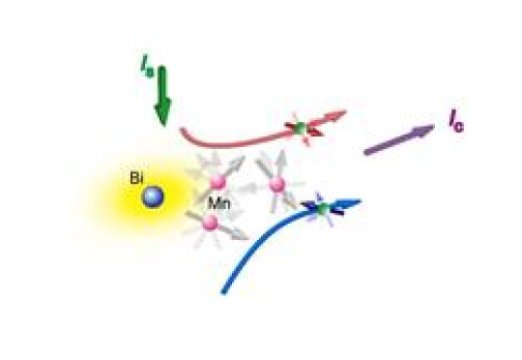A new class of electronics has been discovered by the researchers which have been named as Spintronics. Spintronics are one-of-a-kind as they utilize both the charge and spin for energy consumption. It should be noted that a pure spin current along with the flow of spin devoid of any charge current is an amazing physical quality in itself. For the layman it might not mean much but it has the potential to play a decisive role in developing low energy consuming electronics in future.
Who are behind the discovery of Spintronics?
A group of researchers from Japan and France has successfully detected the magnetic fluctuations with the help of pure spin current. They used the power of the spin current in various sensitive ways to detect the magnetic fluctuation but they didn’t resort to any conventional magnetization measurement which is never heard of.
The science behind the Spintronics discovery
It is widely known that the electrons posses two degree of freedom i.e. charge and spin. In the recent years, these two attributes have been combined extensively and led to the development of microfabrication technology. Now it is possible to create such devices which are far better than the electronics of the yester era. This particular field of study is termed as ‘spintronics’ and prime example of devices made with it include the magnetic random access memory (MRAM) and magnetic head of hard drives.
The aim behind this research was to understand the spin dependent transport properties which happen to be driving force of Spintronics. The pure spin current was utilized to perform some probe on the spin properties in a sensitive manner. In the field of spintronics having a pure spin current going the flow of spin angular momentum with causing any charge current can be extremely helpful in development of electronics which aren’t energy hogs.
How this research was carried out?
A spin glass was chosen to test for the magnetic fluctuations by the researchers. This spin glass wasn’t just a ordinary one rather it’s a unique spin glass which has intricate system in which small amount of impurities owning magnetic moments are distributed randomly. Now at the high temperature these magnetic moments tend to fluctuate at relatively high speed but as the temperature makes its approach towards glass temperature, the fluctuations simply becomes slower and these magnetic moments become frozen. Researchers have studied these aspects in a large number of spin systems even with the magnetization measurements.
Future prospects of this research
This research has shown the appearance of an anomaly whenever the pure spin current was injected into the spin glass system. This anomaly was quite off chart and the result indicated that the pure spin current can be utilized in detecting the fluctuating magnetic moments in a better way than the conventional magnetization measurements.
This research even forecasted that in future magnetic sensors can be easily developed featuring the pure spin current. If such a thing happens then the SQUID or more commonly known as superconducting quantum interference device can easily be replaced by these magnetic sensors.

 Why Your Link Building Efforts Might Fail
Why Your Link Building Efforts Might Fail  How to Request or Give Remote Control in a FaceTime Call on iPhone
How to Request or Give Remote Control in a FaceTime Call on iPhone  The Rise of Intelligent Automation in Business Operations
The Rise of Intelligent Automation in Business Operations  The Best Ideas for Designing Your Custom Printed Ring Binder
The Best Ideas for Designing Your Custom Printed Ring Binder  How Technology is Changing the Way We Play Hearts
How Technology is Changing the Way We Play Hearts  The Rise of Open Source: A Journey to Innovation and Collaboration
The Rise of Open Source: A Journey to Innovation and Collaboration  How SD-WAN Is Revolutionizing Business Networks
How SD-WAN Is Revolutionizing Business Networks  Effective Digital Advertising Strategies for Modern Businesses
Effective Digital Advertising Strategies for Modern Businesses  Tips for Marketing Dental Packages: Easy Ways to Grow Your Reach
Tips for Marketing Dental Packages: Easy Ways to Grow Your Reach 
